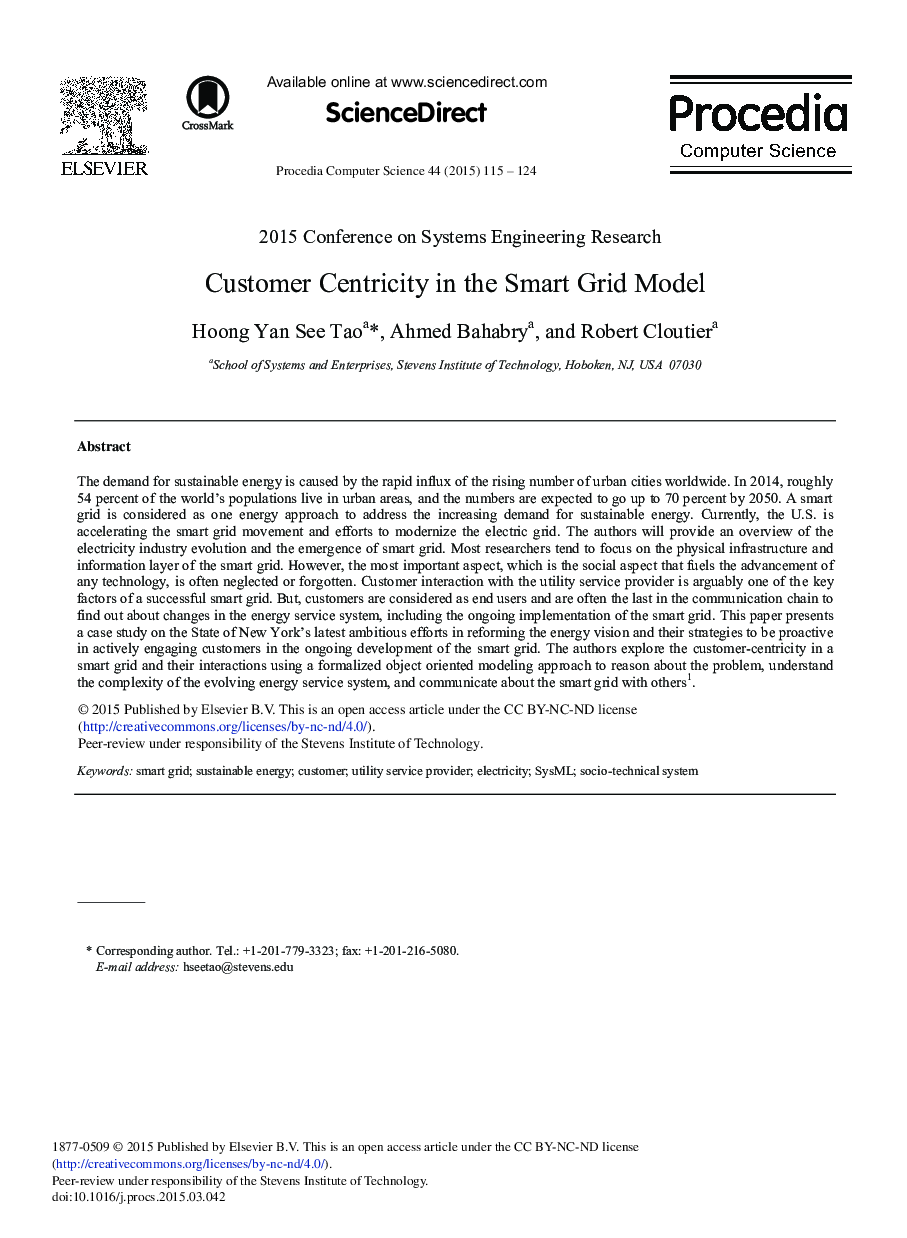| Article ID | Journal | Published Year | Pages | File Type |
|---|---|---|---|---|
| 488709 | Procedia Computer Science | 2015 | 10 Pages |
The demand for sustainable energy is caused by the rapid influx of the rising number of urban cities worldwide. In 2014, roughly 54 percent of the world's populations live in urban areas, and the numbers are expected to go up to 70 percent by 2050. A smart grid is considered as one energy approach to address the increasing demand for sustainable energy. Currently, the U.S. is accelerating the smart grid movement and efforts to modernize the electric grid. The authors will provide an overview of the electricity industry evolution and the emergence of smart grid. Most researchers tend to focus on the physical infrastructure and information layer of the smart grid. However, the most important aspect, which is the social aspect that fuels the advancement of any technology, is often neglected or forgotten. Customer interaction with the utility service provider is arguably one of the key factors of a successful smart grid. But, customers are considered as end users and are often the last in the communication chain to find out about changes in the energy service system, including the ongoing implementation of the smart grid. This paper presents a case study on the State of New York's latest ambitious efforts in reforming the energy vision and their strategies to be proactive in actively engaging customers in the ongoing development of the smart grid. The authors explore the customer-centricity in a smart grid and their interactions using a formalized object oriented modeling approach to reason about the problem, understand the complexity of the evolving energy service system, and communicate about the smart grid with others1.
